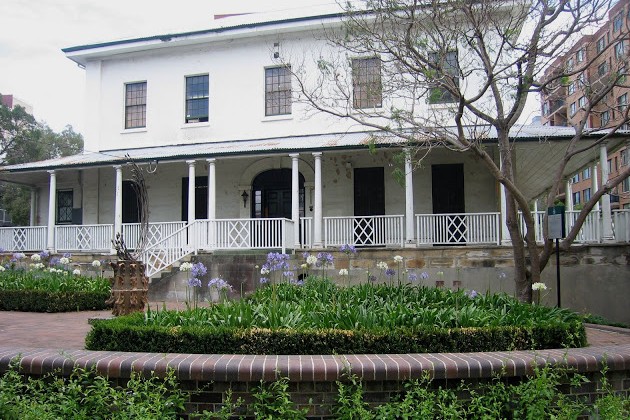Francis Greenway
Cleveland House, Surry Hills, New South Wales, Australia
Cleveland House c1823 is reputed to be Sydney’s oldest house. Designed and probably built (see Articles of Interest page- Sydney Gazette) by Francis Greenway, the first Colonial Government appointed architect. The house was built for Daniel Cooper, a former convict and major influence in the economy of the early Colony of New South Wales.
Appointment by Governor Macquarie
“In the new year, 1816, the governor’s secretary, John Campbell, addressed Greenway as ‘Civil Architect’, but it was not until March that Macquarie officially appointed him ‘to act as Civil Architect, and Assistant to the Engineer’, with a salary of three shillings a day, payable from the Police Fund; a government barrack and fuel was provided for him and his family, the use of a government horse, and travelling expenses as necessary. Over a year later the governor informed the Secretary of State, Lord Bathurst, of the creation of the post of Civil Architect and Greenway’s appointment to it” 1
Published praise from Morton Herman F.R.A.I.A. (1907-1983)
“Time, too, has been unkind to his work – but Australia has almost consistently abused the buildings of all its earlier designers. It is indeed strange that Australians who revere Greenway and his part in Australian history can look without a qualm on the mutilations of his work and see nothing shameful in the shoddy alteration and despoliation of the masterpieces of our early architecture, designed by the first, and perhaps still greatest, architect who was in, and of, Australia”2
1. Broadbent JHughes J. Francis Greenway Architect. Glebe, N.S.W.: Historic Houses Trust of New South Wales; 1997:14.
2. M.H.Ellis, FRANCIS GREENWAY His life and Times (xvii), Angus and Robertson.
Cleveland House Name
There has to be some doubt about the various claims as to the origin of the name Cleveland House. Locally the name derives from the grant of 10 acres to Charles Smith in 1809 (reputedly by Governor Macquarie which is unlikely because the Governor succeeded to his appointment on January 1st 1810) to which Governor Macquarie reportedly required it to be later named Cleaveland Gardens. This is likely to have been mistranslated from some form of vague association with a Major Cleaveland who was an early colonial Regimental appointment during this period. No evidence has been found to support this ‘association’.
More likely it was Governor Macquarie, a confirmed royalist, who chose the name from a similar situation in the United Kingdom where a parcel of land was named Cleveland Gardens which in turn was so named after Lord Cleveland (1766-1842) and who was later appointed the Duke of Cleveland.
Lord Cleveland was a landowner, politician and slave owner (233 slaves owned in Barbados) for which he was awarded GBP4,854.00 under the Slave Compensation Act 1837.
